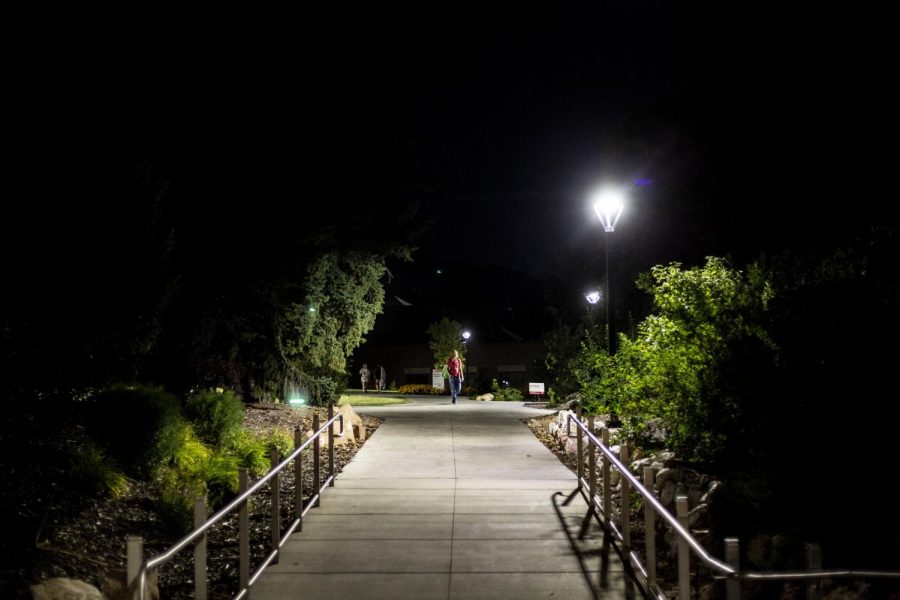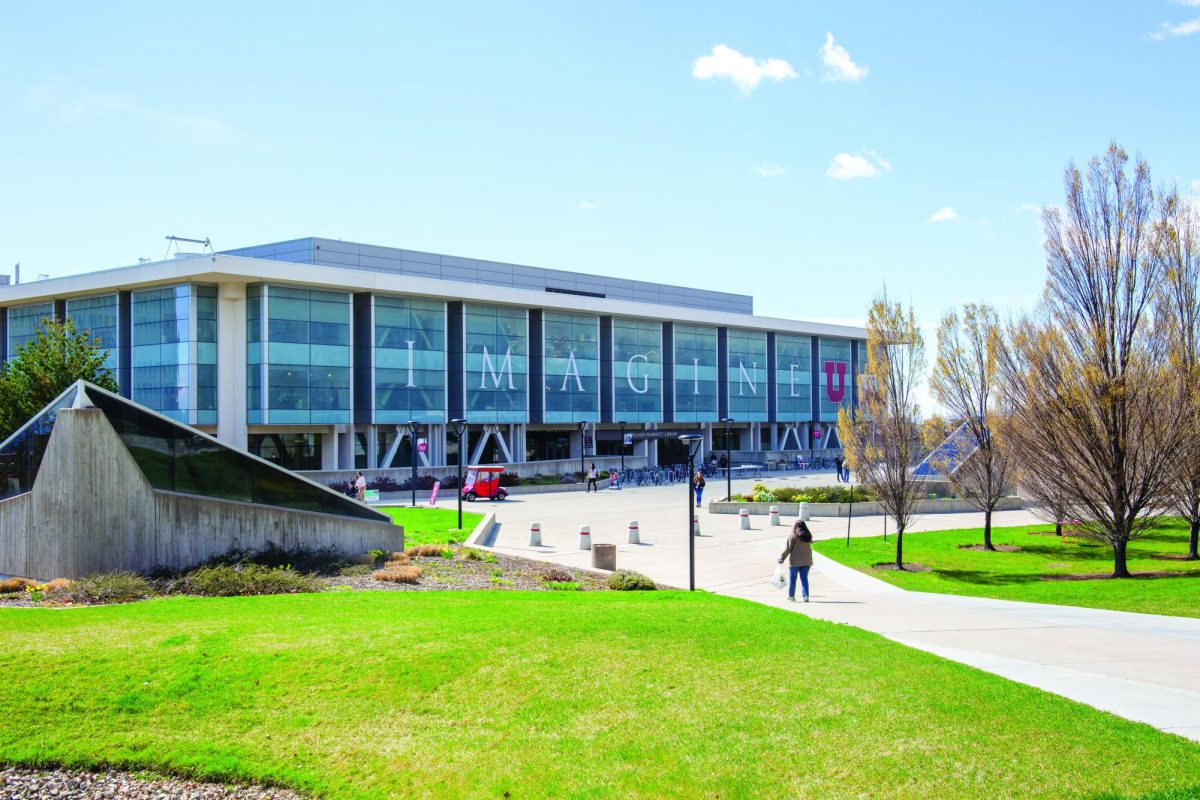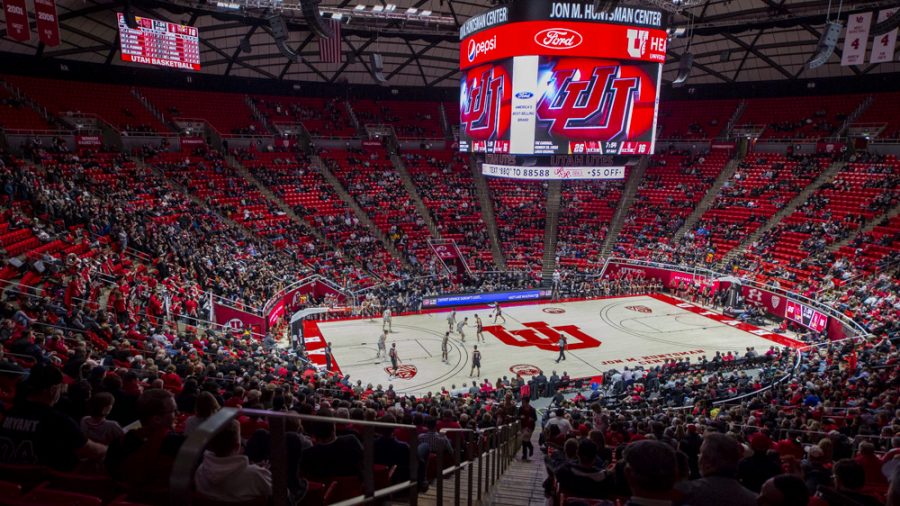Barron: More Needs to Be Done to Make the SafeRide Program Functional
(Photo by Justin Prather | The Daily Utah Chronicle)
February 7, 2020
On Wednesday evenings, my last class finishes at 10 p.m. Typically, I walk the fifteen minutes home clutching my panic alarm while running the Companion app on my phone. I used the University of Utah Campus Police’s escort service when I was a freshman, but I haven’t requested one since I had a bad experience. The escort officer made me uncomfortable, posing guesses about what I could possibly be doing out so late and asking me personal questions.
My willingness to request a police escort has deteriorated further since Lauren McCluskey’s murder and the explosive reports of campus police officers mishandling the cases of female victims. However, after reading the U’s October crime report, I decided it would be irresponsible not to try the U’s new SafeRide service. I ordered a SafeRide fifteen minutes prior to the end of my class, but ended up waiting for nearly half an hour after my class ended before I canceled the ride and walked home, again gripping my panic alarm.
SafeRide is a ride-hailing service that was introduced at the beginning of the fall semester and implemented based on student recommendations to the University’s Safety Task Force. Run by Commuter Services, this program safely transports students around campus at night by allowing students to request a ride on campus to their dorm or off campus transportation from their phone or computer. While the SafeRide program has the potential to increase campus safety, students need to be better informed of vehicle safety features, ride wait times must be decreased and operation hours extended to the weekend for it to be truly impactful.
After feeling uncomfortable alone with an officer in the back of his police vehicle, I never used the campus police escort service again, and felt similarly apprehensive to utilize SafeRide. I did not want to be placed in a situation that was uncomfortable or potentially unsafe. As there is no mention of vehicle features or system mechanisms designed to keep passengers and drivers safe on the SafeRide information page, I assumed there were no such safeguards for this service. But according to SafeRide manager Chad Larsen, there are dashboard cameras installed in SafeRide vehicles and a police dispatcher observes vehicle movement to ensure passengers arrive at their destinations safely, and drivers remain safe during their shifts. If this information had been more readily advertised with the service, I believe more U students would utilize SafeRide.
Of the 80 SafeRides ordered on a typical evening, only about 50 of the rides are completed. “We have some cancellations … some people say that the wait time is a little high,” said Larsen. The average wait time for commercial rideshares like Lyft and Uber is less than five minutes, but the average wait time for SafeRide is almost 10 minutes — which increases up to 30 minutes during peak use. Larsen is aware that exorbitant wait times decrease SafeRide use as students, like me, will opt to walk across campus alone instead of waiting indefinitely. “That’s one thing we are looking [to improve], it is why we are putting a third vehicle out there,” he said. This third vehicle is expected to decrease the peak wait time to 15 minutes. For this fledgling service to be utilized by students, more resources need to be dedicated to the program to increase fleet size and decrease wait times.
SafeRide currently operates from 6:00 p.m. to 12:30 a.m. on weeknights only, ignoring the safety needs of students who utilize the campus on weekends. As one of the almost 5,000 students currently living on the U’s campus, I have spent several weekends studying in the Marriott Library until closing and then walking home in the dark. Pretending the campus is only active five days a week is dangerous. If the SafeRide program was dedicated to keeping students safe it should not take weekends off.
“Safety remains an absolute priority for our campus and our university, and SafeRide is an example of this focus on safety,” said Lori McDonald, Associate Vice President of the U, when announcing the SafeRide program. As the SafeRide program currently stands it is the perfect case study on how the U addresses safety — with limited information, inadequate resources and disregard to student needs beyond the scope defined by the administration. However, if vehicle safety measures were communicated to student stakeholders, more vehicles and drivers were obtained for the program, and operating hours were expanded to cover the weekend, SafeRide would provide campus with an example of how student safety should be addressed.
m.barron@dailyutahchronicle.com













